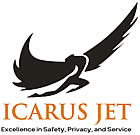 |
How emerging business aviation hubs aim to tighten the gapBy Kevin Singh, Founder & CEO, Icarus Jet. |
The growth of private aviation in the aftermath of the pandemic is no longer centered around North America and Europe.
Some intriguing developments are taking place in Latin America, Africa, and Australia - three regions that are fast-transforming with investment in infrastructure, expansion of air corridors, and digitalization.
Each is being propelled by different fundamentals: airport capacity and modernization of infrastructure in Australia; growing commercial as well as humanitarian air corridors in Africa; and Latin America, with sheer depth of fleets as well as the creation of a digital-native client base. They together comprise the next chapter of the diversification of global private aviation.
Australia: Infrastructure as the catalyst
Australia’s story is one of capacity meeting opportunity. The country’s aviation sector is defined by predictability, and predictability begins with infrastructure. Sydney Kingsford Smith Airport, the nation’s busiest airport, operates under a strict curfew between 23:00 and 06:00 and an 80-movement-per-hour cap. Those statutory limits, unchanged for decades, define how private operators plan every international arrival, domestic transfer, and diversion. The rules are permanent, and as any flight planner knows, they shape everything from slot allocation to crew duty windows.
That rigidity is why Western Sydney International (Nancy-Bird Walton) Airport, scheduled to open in late 2026, marks such a transformative development. The facility will feature a 3,700-meter runway, 24-hour operations, and a design built for scalability - an alternative to Sydney’s curfew-bound main hub. The new M12 motorway, nearing completion, will link the airport directly to Sydney’s motorway grid, improving surface connectivity for passengers and crew transfers alike. These details may seem minor, but they matter: reliable nighttime access, streamlined road transport, and new hangar capacity reduce the kind of operational friction that erodes schedule integrity for international business jets.
Meanwhile, the wider Asia-Pacific region has shown some of the best performance according to WINGX data this year. The Australian stable economic environment, curfew-free airport growth, and growing Asia connectivity mean the market is entering a structural phase of access, rather than just coming out of turnaround.

Africa: The corridor effect
African private flying activity has seen a dramatic and persistent upward surge. Year-on-year growth of over 20% in some months of 2025 came from the African market, a spectacular showing considering the region’s small fleet base.
JETNET and MEBAA estimates suggest the African active bizjet fleet to be slightly over 400 aircraft strong, with South Africa accounting for about one-third of this number. The gap between potential capacity and requirement is gigantic, yet that’s the gap that presents opportunities to the operator as well as the trip-support service providers.
The new surge of activity is most readily explained through the corridor effect, the intensification of direct and indirect fly links between African capitals and the Gulf. Scheduled carriers are adding routes between Addis Ababa, Nairobi, Lagos, and Gulf centers such as Abu Dhabi, Doha, and Jeddah. The new commercial links are stimuli to private flying, intensifying business, energy, and medical-transfer flows between the Middle East and Africa. As governments, investors, and project teams fly between the regions, charter and fractional activity covers the imperatives that scheduled cannot meet.
This expansion most prominently manifests in industries as diverse as energy, mining, and human aid logistics. The pre-existing aircraft services market, to the African region inclusive, as Investec informed in its 2024 Global Helicopter and Aviation Report, attained almost USD 27.7 billion in 2023 and will jump to USD 48 billion in 2030.
Nevertheless, the structural hurdles are very real. The African maintenance, repair, and overhaul (MRO) base remains underdeveloped, with limited trustworthy facilities throughout major subregions. This situation requires operators to integrate redundancy into each mission planning schedule, frequently shifting aircraft from the Gulf or Europe. Lead-in times to get permission differ considerably among states, and security situations at the smaller airports can fluctuate rapidly.
Trip-support companies like Icarus Jet view this as risk management, while establishing trusted ground partnerships locally, having contingency routes on hand, and pre-clearing clearances along the Gulf–Africa routes remain paramount in this growing market.
Latin America: Depth and digitalization
Latin America offers a different scenario: no constraints of infrastructure but high availability, plus a customer behavior change across a new generation. Brazil and Mexico combined represent more than 2,000 business aircraft, two of the world’s largest national fleets along with the United States. That depth equates to higher aircraft availability, an active secondary market, as well as competitive pricing throughout the charter as well as management segments.
Market data from Polaris Market Research places the Latin American business jet market at approximately USD 740 million in 2025, with a projected double-digit compound annual growth rate through 2030. Those numbers may appear modest compared to global figures, but the underlying trends are more important: the access of private flight within regional economies, the rise of younger high-net-worth entrepreneurs, and the normalization of digital booking and transparent pricing platforms.
In Mexico, new APIS and manifest regulations streamlined customs procedures, minimizing clearance delays and enhancing cross-border efficiency with the United States. Brazilian internal connectivity across over 2,500 airports enables a blend of turboprop, light jet, and long-range operation that caters to both leisure and business use. Such operational building blocks render Latin America one of the few places where the entire range of private aircraft use, air taxi (Brazil) to ultra-range long range, coexists naturally.
Furthermore, there is a cultural evolution underway. Latin American passengers, particularly in Mexico, Chile, and Brazil, are going digital native themselves. They expect live pricing, app confirmation, and transparent cancellation policies, a mindset that mirrors what Millennial and Gen Z passengers already require in the United States and Europe. The opportunity and the challenge that service providers confront is that the tech stack now defines the customer’s experience to the same degree that the aircraft itself does, and adapting to those expectations seems paramount.

Operational ramifications
For companies supporting private aircraft operations globally, these regional trends translate into actionable strategies. In Australia, it’s about positioning resources ahead of Western Sydney’s opening, thus establishing handler relationships, understanding slot algorithms, and mapping ground-transport links that will define the first generation of operations there.
In Africa, success depends on corridor-specific expertise, like knowing which Gulf hub offers the most predictable staging, how to mitigate AOG risks, and where to find trusted maintenance support within reach of primary routes. And in Latin America, it’s about reliability and digital transparency while aligning operations with the expectations of a younger, more connected customer base.
The numbers, from WINGX to Investec and Polaris valuations, tell a consistent story of decentralized growth. The industry center of gravity of private aircraft is no longer shifting away from America or Europe; it’s growing. The opportunity ahead for operators, brokers, and trip-support providers is to evolve with it. The future of expansion won’t be one of excess or richesse, but one of accessibility, dependability, and responsiveness to still additional portions of the world.
With private flight diversifying geographically in the future, the true opportunity is to transfer the same degree of accuracy and consistency required in mature markets to the still-emerging frameworks.
About the author
Pilot, president, and founder of Icarus Jet, a leading global trip support and aircraft management company, Kevin Singh has flown globally as a chief pilot and captain on private jets like the Hawker 800-A and 850 XP, and the Challenger 600 series and Global 6000.





